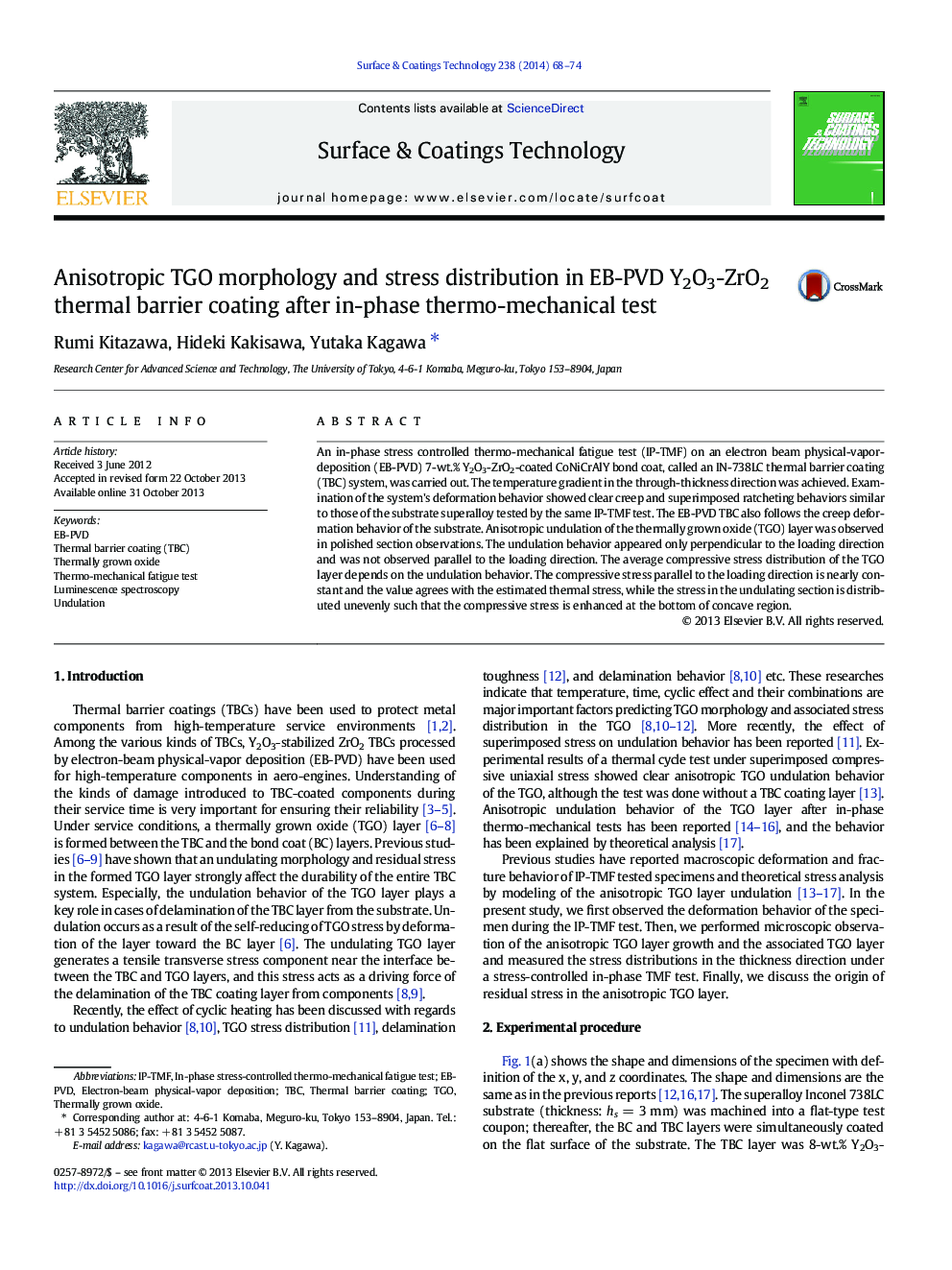| Article ID | Journal | Published Year | Pages | File Type |
|---|---|---|---|---|
| 1657635 | Surface and Coatings Technology | 2014 | 7 Pages |
•Under in-phase TMF mode, Y2O3-ZrO2 TBC layer deforms without cracking up to tensile strain ~ 8%.•The thickness of TGO is independent of applied load and loading directions, respectively.•TGO layer shows anisotropic stress distribution, affected by its anisotropic morphology.•The stress of TGO layer at the flat section is nearly the same as estimated thermal stress.
An in-phase stress controlled thermo-mechanical fatigue test (IP-TMF) on an electron beam physical-vapor-deposition (EB-PVD) 7-wt.% Y2O3-ZrO2-coated CoNiCrAlY bond coat, called an IN-738LC thermal barrier coating (TBC) system, was carried out. The temperature gradient in the through-thickness direction was achieved. Examination of the system's deformation behavior showed clear creep and superimposed ratcheting behaviors similar to those of the substrate superalloy tested by the same IP-TMF test. The EB-PVD TBC also follows the creep deformation behavior of the substrate. Anisotropic undulation of the thermally grown oxide (TGO) layer was observed in polished section observations. The undulation behavior appeared only perpendicular to the loading direction and was not observed parallel to the loading direction. The average compressive stress distribution of the TGO layer depends on the undulation behavior. The compressive stress parallel to the loading direction is nearly constant and the value agrees with the estimated thermal stress, while the stress in the undulating section is distributed unevenly such that the compressive stress is enhanced at the bottom of concave region.
